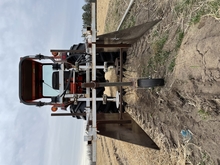Key points
- Apply straw mulch over the plants in the late fall, once the plants are dormant and soil temperatures are consistently below 40°F.
- Spring care of June-bearing cultivars begins with mulch removal in mid-April to early May.
- Remove straw in the spring when the soil temperature reaches 40°F and the first new leaves begin growing.
- Delaying mulch removal too long will delay harvest and decrease yield. However, removing it too early increases the risk of freeze and frost damage.
- Do not use straw mulch for day-neutral strawberries unless overwintering them (not recommended).
Apply straw mulch in the fall
Apply straw mulch over strawberry plants in the late fall to prevent winter injury. Mulch saves the plants from drying out or being killed by cold winter temperatures. It also retains soil moisture the following spring and summer.
If strawberries are left uncovered in the winter, their crowns can be damaged or killed by temperatures below 12°F.
- Apply mulch once soil temperatures have been 40°F or below for 3 consecutive days, which is the threshold at which the plants enter dormancy. In Minnesota, this occurs between November and December.
- Do not apply mulch until the plants are dormant.
- Spread straw at a rate of 2.5 to 3.0 tons per acre, covering the plants by 2 to 3 inches.
- Very small operations can hand-apply straw, but most farms are large enough that they need to use a mechanical mulcher that grinds ("fluffs") and blows the straw over the rows.
Time mulch application around early snowfall and cold snaps
Early cold temperatures and snowfall, such as in October, make it difficult to decide when to lay down mulch for strawberries.
- Do not rush to mulch just because an early snowfall occurred.
- Snow provides some insulation from extremely low temperatures.
- It is very important that the plants go dormant and soil temperatures are consistently below 40°F before applying straw.
Ideally, an early snowfall will melt, allowing you to mulch before consistent cold weather sets in.
Mulching Strawberries for Winter Protection (05:12)
Removing Mulch from Strawberries in Spring (03:57)
Remove straw in the spring
Remove straw from strawberries when they first begin growing in the spring. Delaying mulch removal too long will delay harvest and decrease yield. However, removing it too early increases the risk of spring frost damage.
Time straw removal based on:
- Strawberry leaf growth under the straw.
- Soil temperature and moisture.
- The weather forecast.
To decide when to remove straw, check for strawberry leaf growth under the straw every couple of days starting in early April. Remove it once new leaves emerge, and do not prolong removal very long past that point.
New leaves are those that are emerging from the crowns. They may be green or yellow. Early fruiting varieties typically produce leaves earlier than late-season varieties.
Check the soil temperature with a soil thermometer. The top 2-4 inches of soil should be above 40 degrees F before removing straw.
Check the weather forecast, and plan straw removal accordingly. If a string of very cold days are in the short-term forecast, consider waiting until the coldest temperatures have passed before removing the straw.
Sometimes, warm spring temperatures make plants exit dormancy early, increasing the chance that they may be affected by a late spring frost later on. If uncovered plants are exposed to freezing temperatures, consider frost protection measures especially if flowers have formed.
How to remove straw
Smaller operations may remove straw with hand rakes.
Growers with larger fields use specialized equipment to remove straw, such as modified hay rakes or commercial mulch removers that are driven behind tractors.
Keep a thin layer of straw (0.5-1 inch) over the plants when you remove it. The plants will grow through it and the straw will help suppress weeds, reduce disease, and keep the strawberries off the soil.
For more information on frost protection, see Protecting strawberries from spring freeze and frost.
Reviewed in 2021



